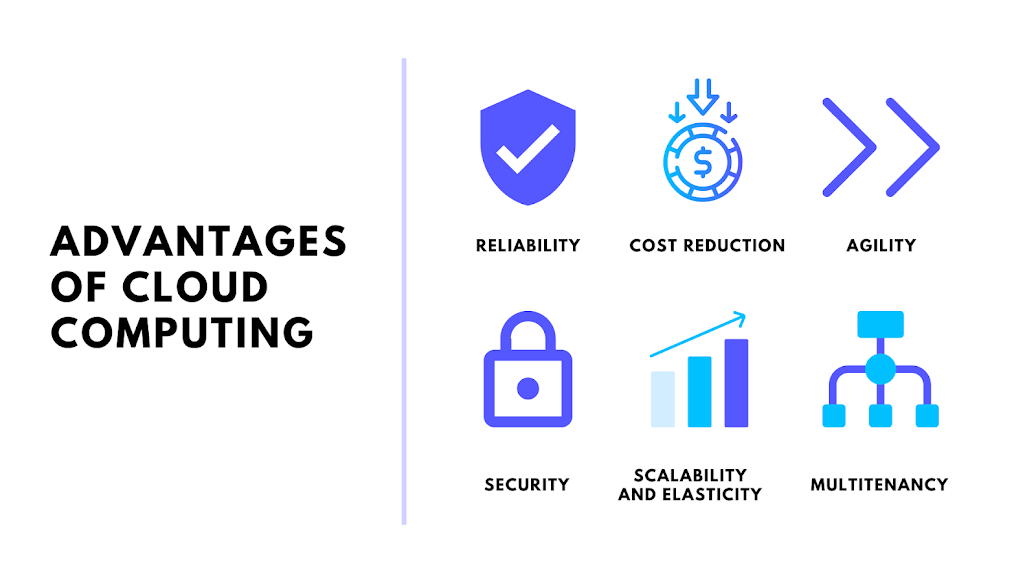Cloud computing has revolutionized the way businesses and individuals leverage technology to streamline operations, enhance productivity, and drive innovation. In today's digital landscape, understanding cloud computing and adopting the right cloud strategy are crucial for organizations to stay competitive and thrive in the ever-evolving technology ecosystem.
By the end of this blog post, you'll have a clear understanding of cloud computing, the potential benefits it offers, and the necessary insights to select the most appropriate cloud strategy for your organization.
So, let's embark on this cloud computing journey together and unlock the immense potential that the cloud has to offer!
Cloud computing is the on-demand delivery of IT resources over the internet with pay-as-you-go pricing.
To understand this definition, let's break it down. On-demand delivery simply means it delivers what is demanded. But what is it delivering? What is an IT resource?
IT resources
The IT resources are various components and assets that are used to support organizations carry out digital operations and achieve their business objectives. They include:
-
Hardware
Computers, servers, routers, switches, storage and peripheral devices like printers and scanners. -
Software
Programs, applications, and operating systems -
Networks
Infrastructure enabling computers and systems to communicate with each other such as LANs, WANs, and wireless networks -
Data Centers
Facilities that house servers, storage systems, networking equipment, and other IT resources. -
Databases
Systems for storing and managing data -
Cybersecurity
Resources and technologies such as firewalls, antivirus software, intrusion detection systems, and encryption tools that protects IT systems, networks and data from unauthorized access. -
IT Staff
Professionals responsible for maintaining IT resources such as system administrators, network engineers, software developers, database administrators, cybersecurity experts, and technical support personnel.
In short, cloud computing does what is known as
undifferentiated heavy lifting of IT.
They are tasks that are common, often repetitive and ultimately
time-consuming that are not unique to your company, but rather is common in
every digital operations.
Pay as you go pricing
Why should you choose cloud computing?
-
Trade upfront expense for variable expense
Upfront expense includes data centers, physical servers, and other resources that you would need to invest in before using them. Variable expense means you only pay for computing resources you consume. -
No expense on running and maintaining data centers
You can use all your resources on your applications and customers rather than on data centers. -
Stop guessing capacity
You can scale your business in or out in response to demand rather than paying for unused resources or be limited by your data center. -
Benefit from massive economies of scale
Since more customers use cloud computing services, you pay less than what would cost had you been alone, resulting in less pay per customer. -
Speed and agility
As opposed to on-premises data center, you can access new features instantly as opposed to weeks. -
Go global in minutes
With data centers all around the world, you can reach your customers with low latency even if they are on the other side of the world.
Deployment models for cloud computing
When choosing deployment strategy, you should consider:
- Required cloud application documents
- Preferred resource management tools
- Legacy IT infrastructure requirements
1. Cloud-based deployment
- Run all parts of the application in the cloud.
- Migrate existing applications to the cloud.
- Design and build new applications in the cloud.
2. On-premises deployment (private cloud deployment)
- Deploy resources by using virtualization and resource management tools.
- Increase resource utilization by using application management and virtualization technologies.
3. Hybrid deployment
- Connect cloud-based resources to on-premises infrastructure.
- Integrate cloud-based resources with legacy IT applications.
For example, a company can keep legacy applications in on-premises while migrating data analytics on cloud.



